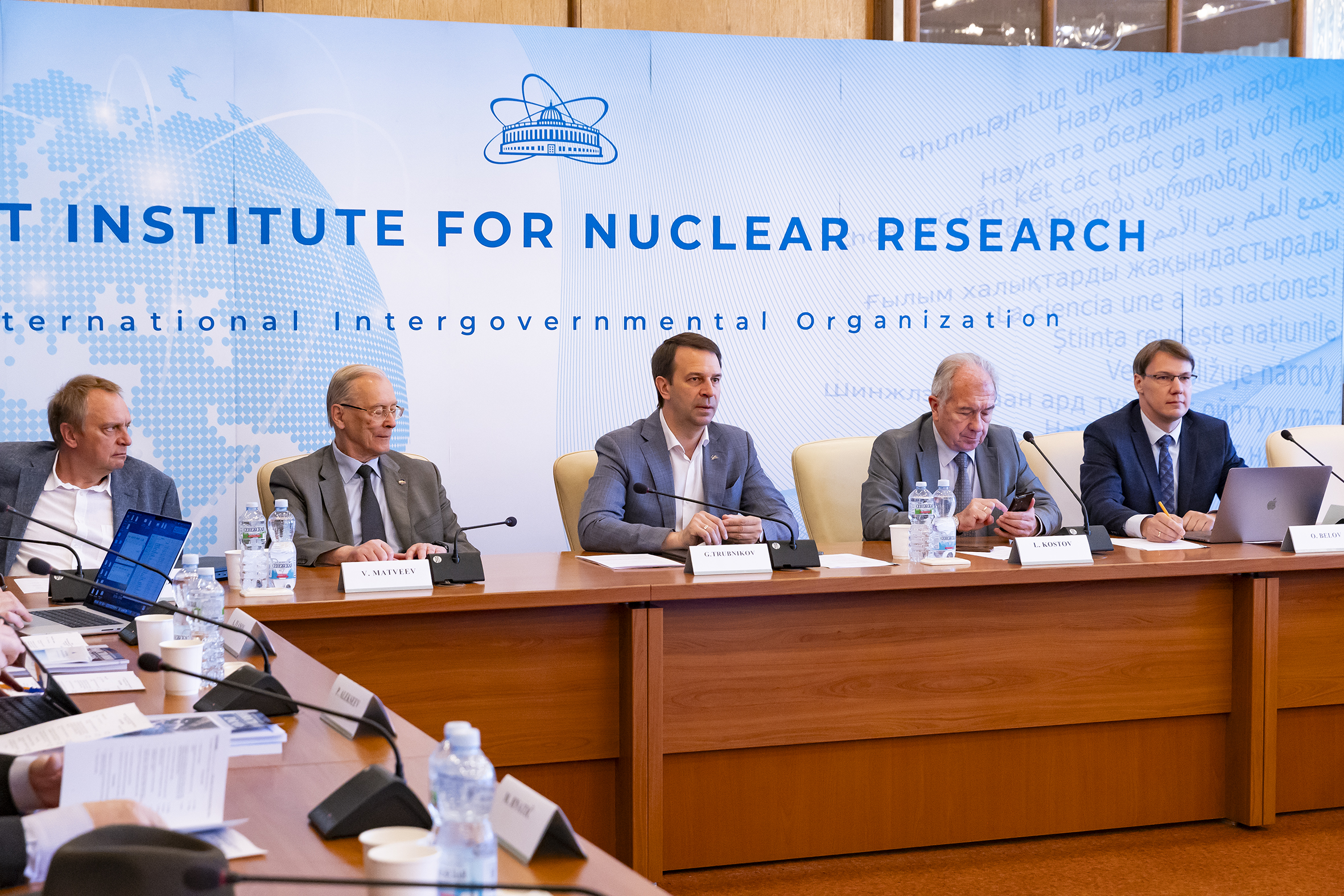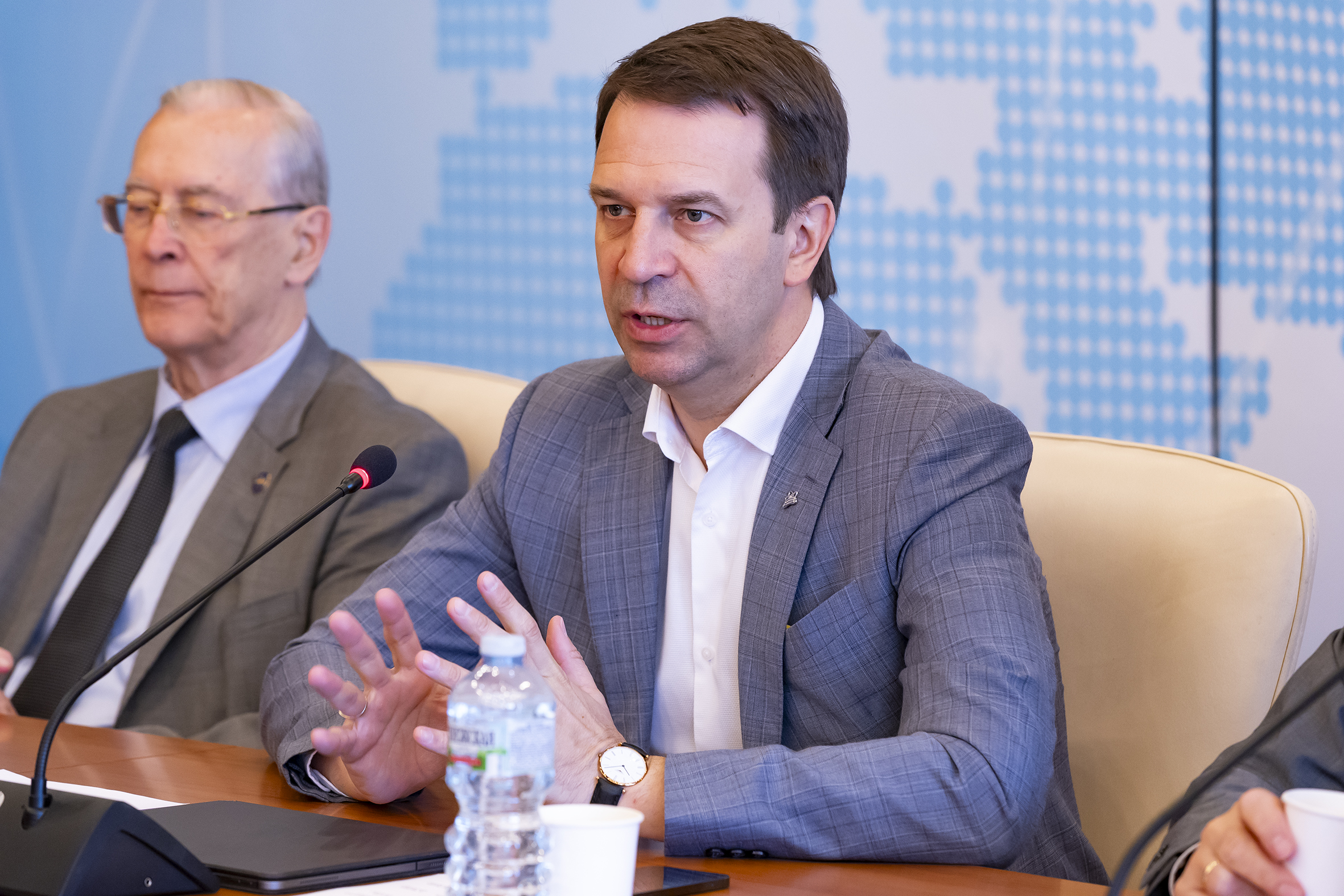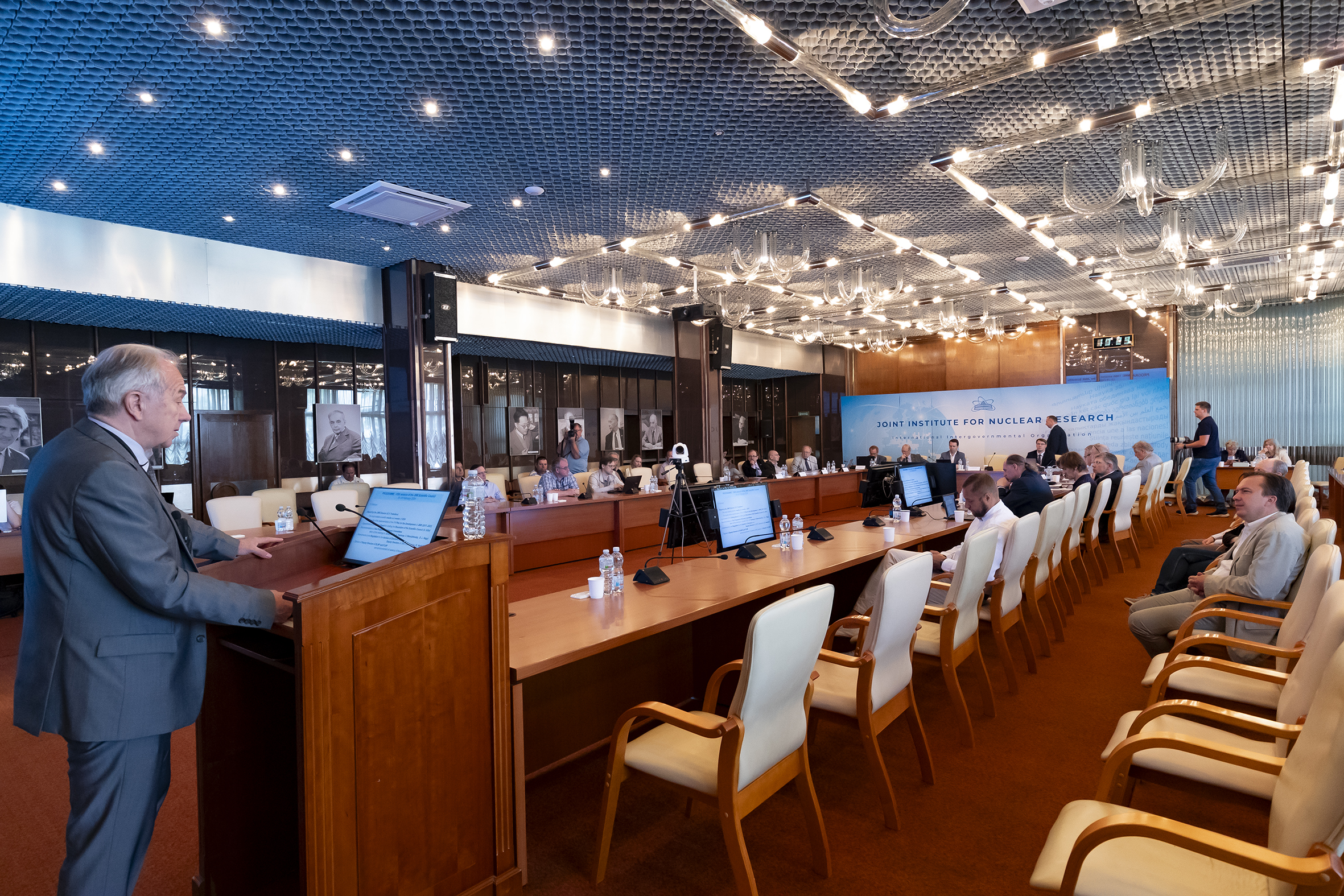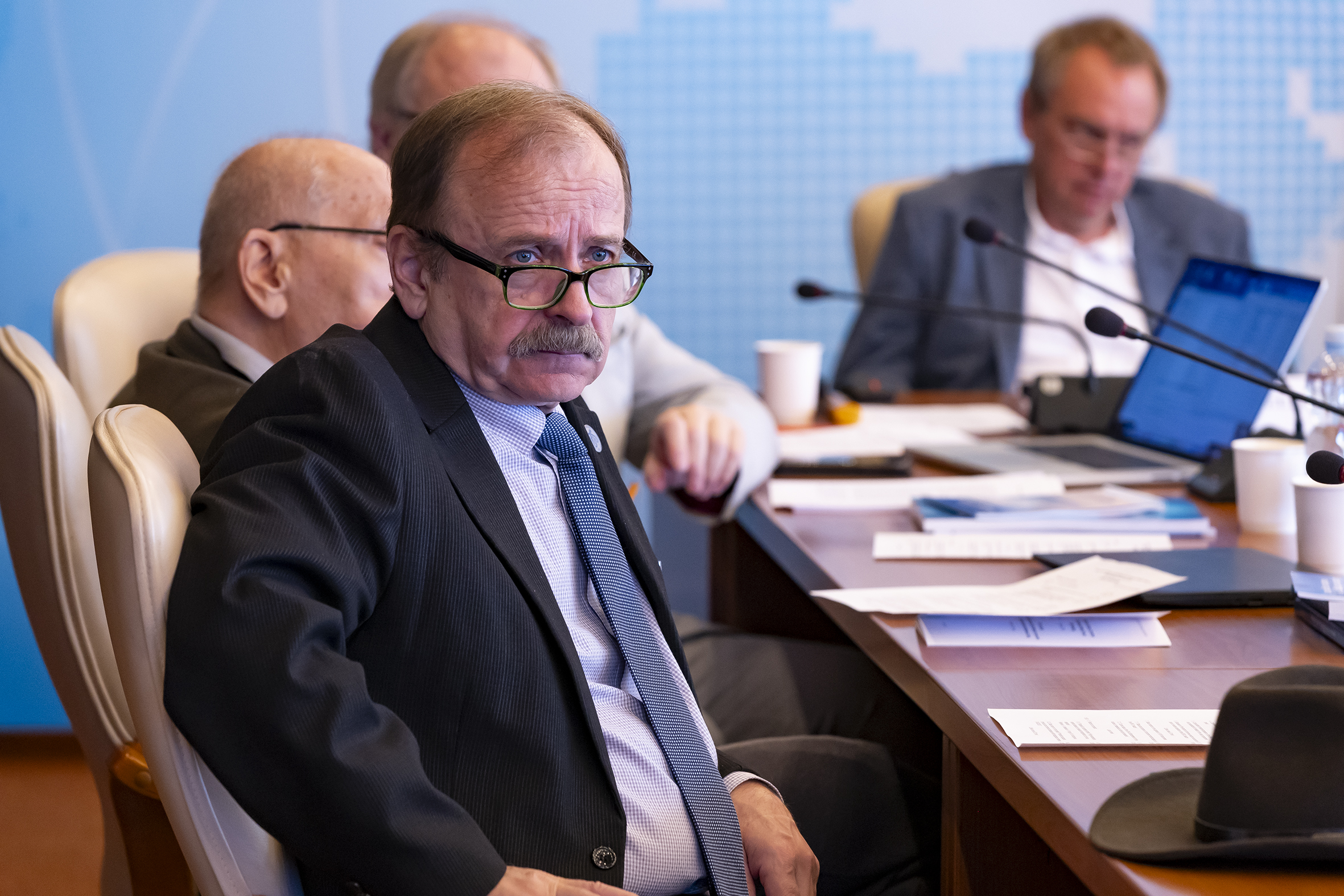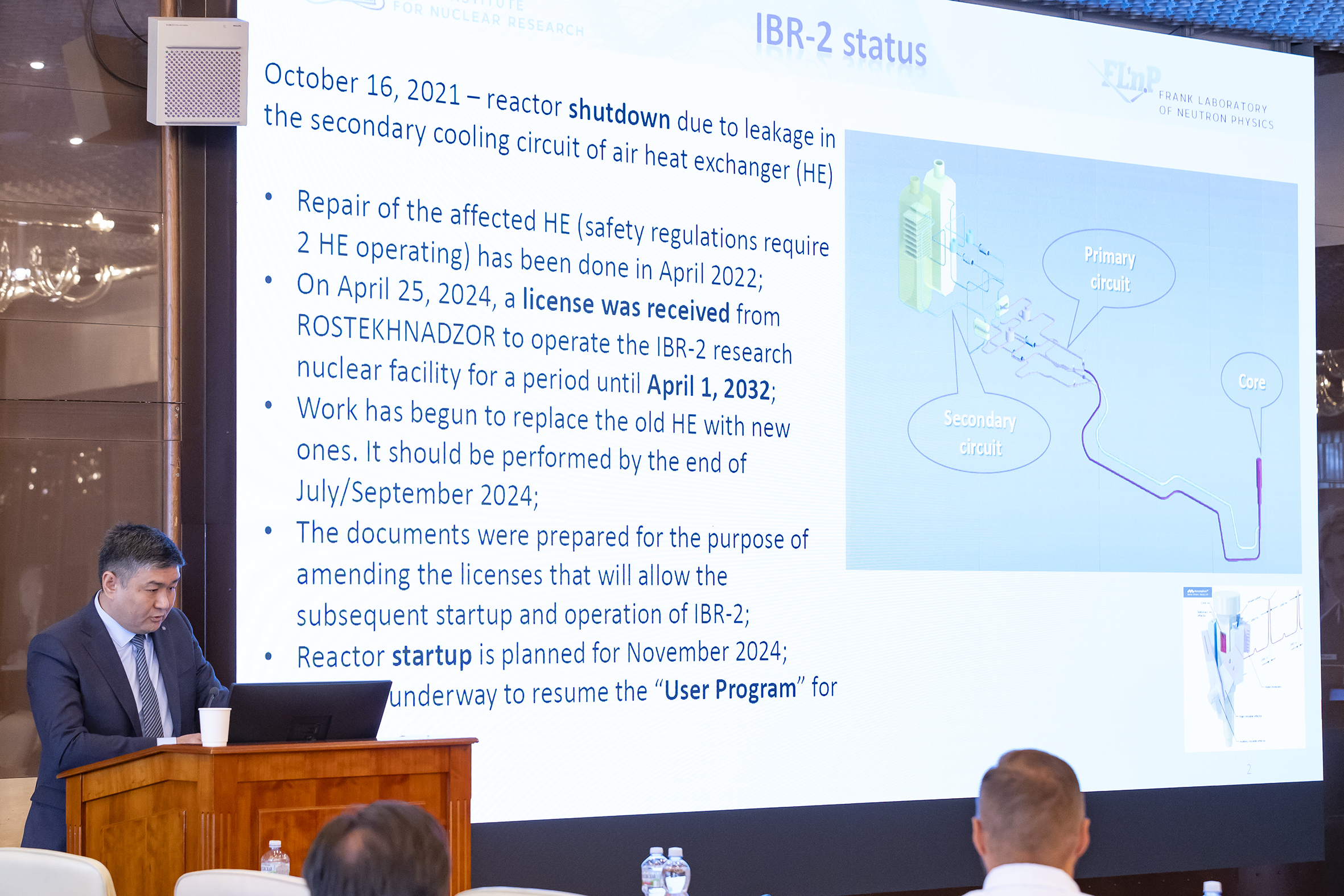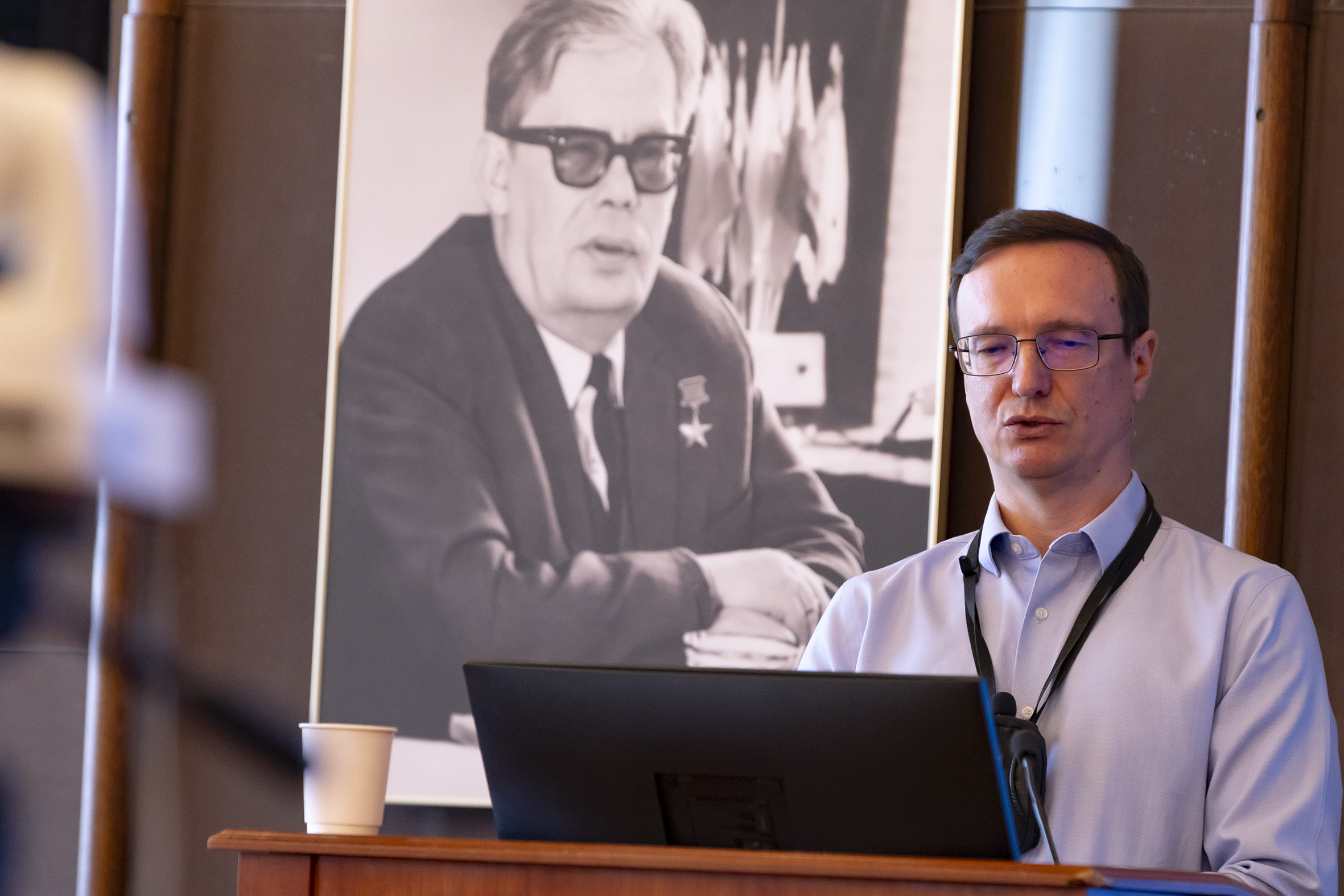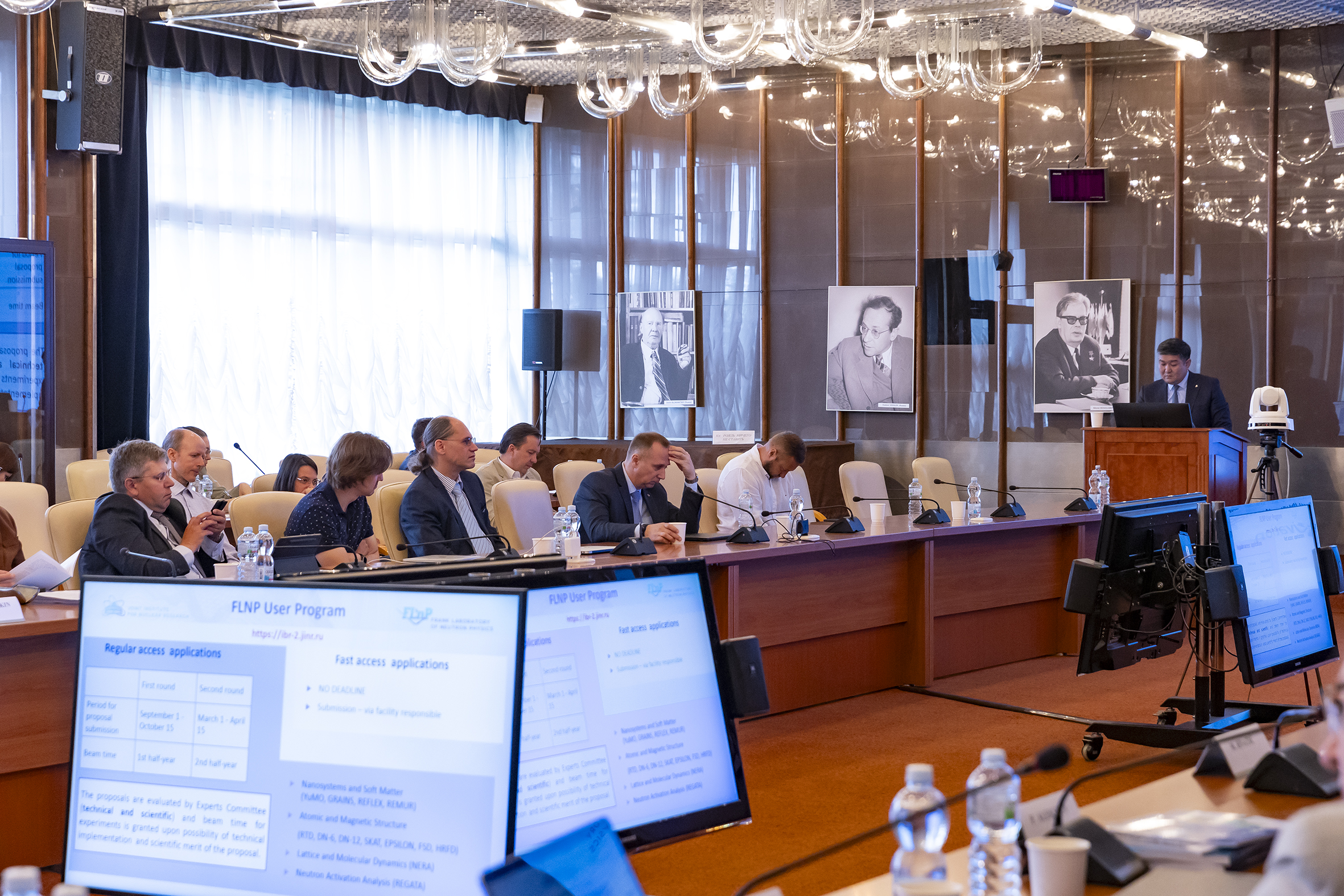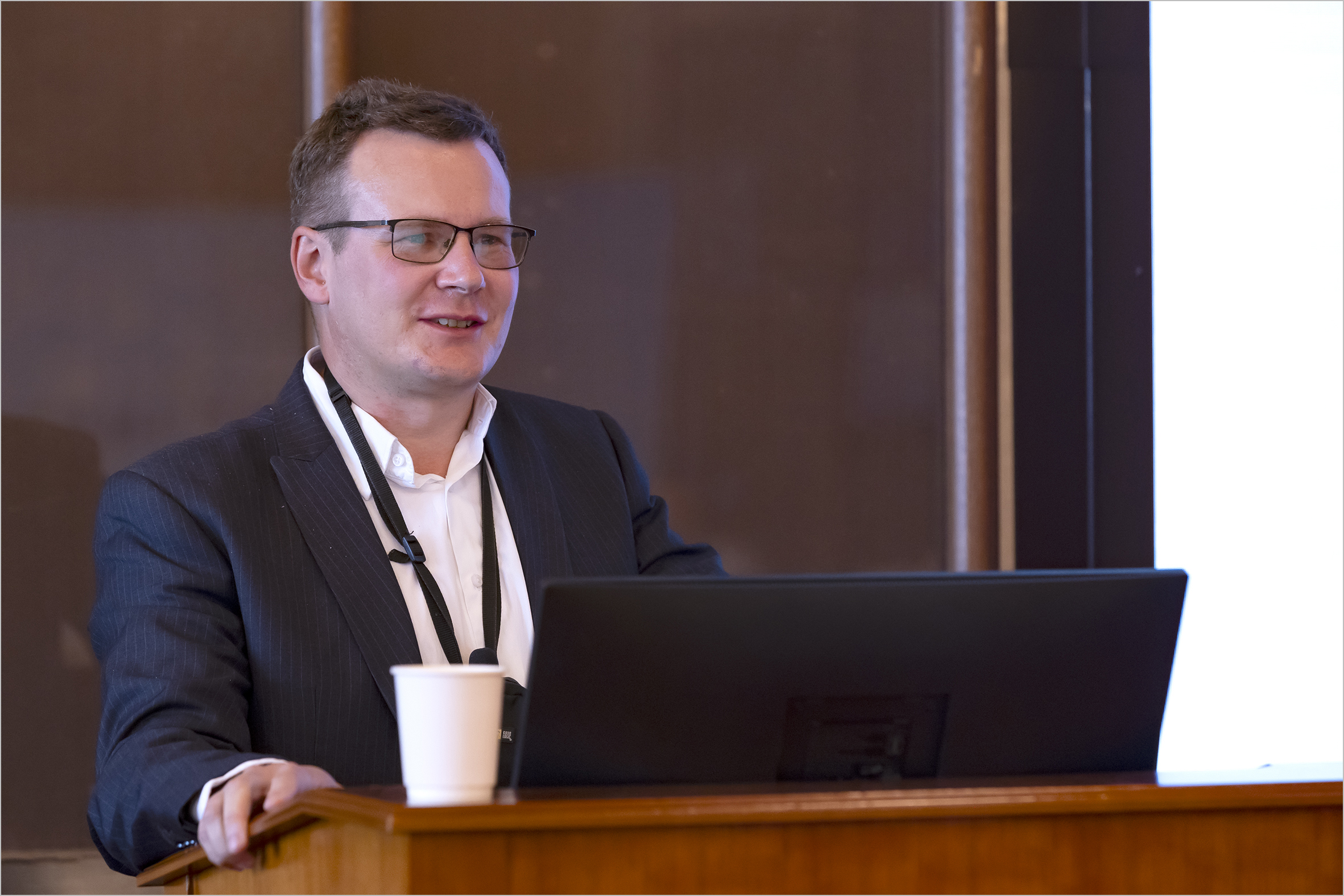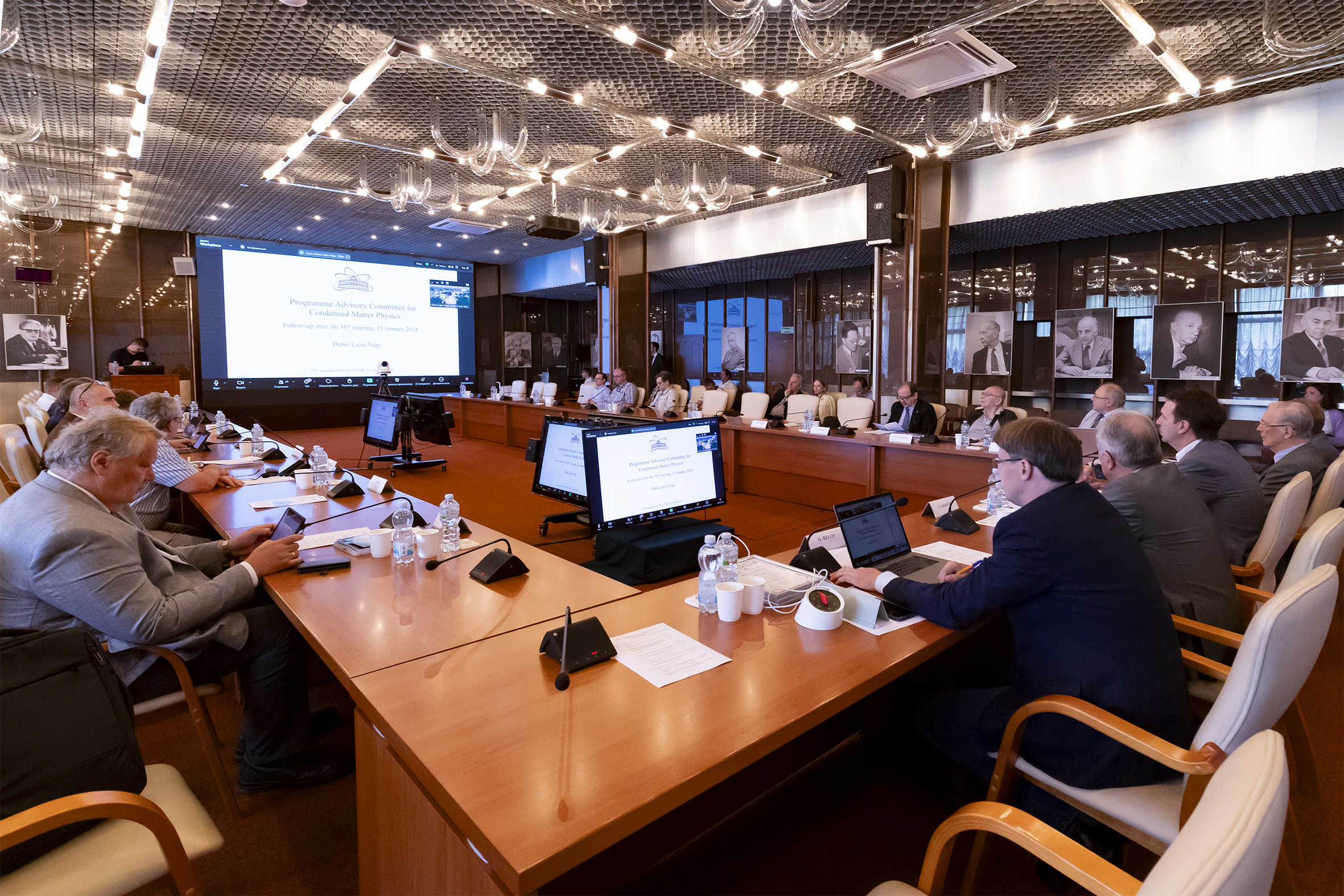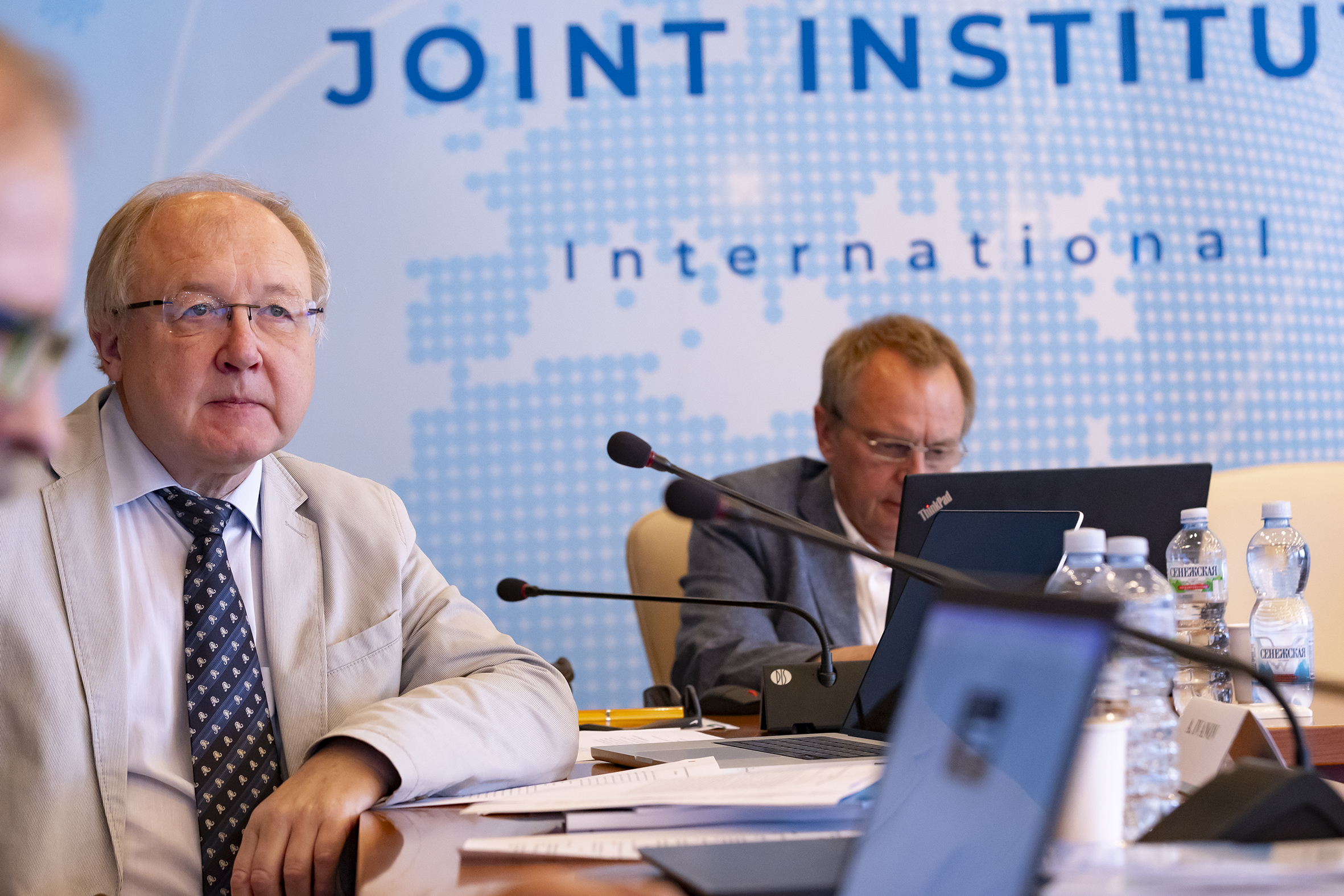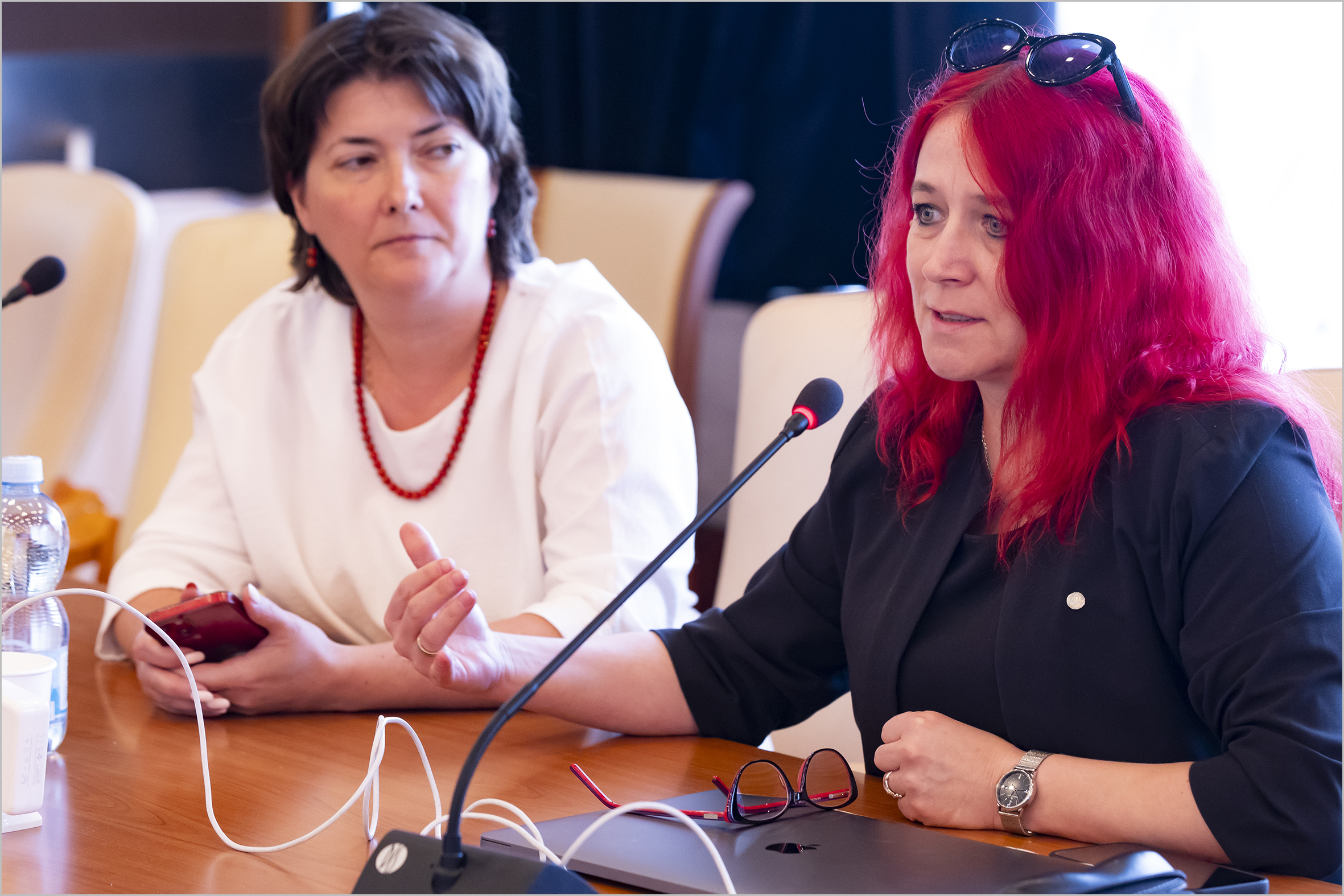PAC CMP focuses on IBR-2 recommissioning and development of facility’s research instruments
News, 26 June 2024
On 24–25 June, the JINR International Conference Centre hosted the 59th meeting of the Programme Advisory Committee for Condensed Matter Physics. The session discussed plans to resume work at the IBR-2 Research Facilities and the development status of a new JINR neutron source. The PAC members recommended to launch a new scientific project proposed by FLNR in engineering and utilising highly sensitive biosensors. The DLNP project aimed at studying molecular mechanisms of resistance of extremophilic organisms to various physico-chemical stresses was also approved for continuation.
JINR Director, Academician Grigory Trubnikov opened the meeting. He highlighted that the Institute’s team of scientists, engineers, and specialists currently consists of representatives from more than 30 countries. “We are glad to welcome new colleagues from China, Egypt, India, and Vietnam,” Grigory Trubnikov said. The Director of the Institute’s Director noted that in mid-June, Russian President Vladimir Putin initiated the technological run of the NICA Accelerator Complex. A full health check of all technical systems of the complex is now underway. As part of the visit, Vladimir Putin met with young scientists who received megagrants and chaired the Council for Science and Education at the International Conference Centre. The key topic of the Council was the development of international science as part of the large projects located in Russia.
PAC CMP Chair Dénes Lajos Nagy discussed the implementation of the previous PAC recommendations concerning JINR research into condensed matter physics. JINR Vice-Director Latchesar Kostov reported about the Resolution of the 135th session of the JINR Scientific Council held in February 2024 and the decisions of the Committee of Plenipotentiaries of the Governments of the JINR Member States adopted in March 2024.
FLNP JINR Director Egor Lychagin provided an update on the new JINR neutron source project. At present, the primary objectives of the work include identifying the required instrumentation, creating reactor dynamics models, and studying the heating of modulator elements and the reactor vessel. The most urgent tasks for the next phase of the reactor design project are to study the mechanisms of generating power feedback and develop mathematical models describing the processes leading to fluctuations in pulse energy, based on the experience of the IBR-2 operation. The work is carried out in close cooperation with the NIKIET JSC. Promising neutron moderators continue to be created as part of the project. The first of three documents planned to be published based on the results of this work is being prepared, titled “Directions of scientific research at a promising pulsed neutron source at FLNP at JINR”.
FLNP JINR Deputy Director Bagdaulet Mukhametuly discussed plans to recommission the IBR-2 Nuclear Research Facility and restart the user programme. He presented an update on obtaining a licence to operate the IBR-2 Facility and preparing to replace the air heat exchangers of the reactor’s second cooling circuit. It is also essential to update the composition of expert committees responsible for allocating beam time for different research facilities at the reactor.
“Our plans for launching the IBR-2 have not changed much. We expect to recommission the IBR-2 Facility at the end of this year as planned, and we will be able to resume the user programme next year. Technical work on the replacement of heat exchangers is already underway. It started as soon as we received the license at the end of April. We plan to complete the replacement of air heat exchangers by the end of July. Then it will be necessary to amend the terms of the license of the IBR-2 Facility and commission it,” Egor Lychagin commented on the work progress at the IBR-2 Nuclear Research Facility.
The report by Head of the Scientific and Experimental Department of the IBR-2 Spectrometer Complex Victor Bodnarchuk was devoted to the status and progress of modernisation of the IBR-2 Research Facilities. All important elements of the spectrometers are being tested and adjusted to ensure proper operation. “The new spectrometer equipment is steadily being worked on. From a technical point of view, it is fully ready for new experiments, scheduled to start at the reactor this November,” Victor Bodnarchuk commented.
Two projects to create new instruments (BJN, inelastic neutron scattering spectrometer in inverse geometry, and SANSARA Small-Angle Neutron Scattering Instrument) are underway. A BJN prototype project has been developed. During 2024-2028, it is planned to create a neutron guide, conduct test measurements on a prototype spectrometer, and manufacture its main structure.
The SANSARA Facility includes two measuring options: a small-angle scattering option and a radiography option. The elements for the radiography option have been delivered and are ready for installation. However, the issue of the detector for the small-angle option remains unresolved. The possibility of developing the Institute’s own SANS Detector is being considered in case delivery is not possible in the near future.
A senior engineer at the FLNP JINR Diffractometry Sector Evgeny Lukin provided an update on the DN-6 Diffractometer for the study of materials at ultrahigh pressures. The device has been significantly upgraded, which has made it possible to increase the density of the neutron flux incident on the sample and improve the quality of experimental data. Today, the DN-6 is one of the most advanced tools in the world for studying neutron scattering on materials under extreme conditions.
The proposal to open a new project, “High-sensitivity sensors based on molecular recognition for virus detection”, was made by Deputy Head of the FLNR Nanocentre Alexander Nechaev. The PAC recommended the new project for implementation in 2025-2029 under the theme “Radiation materials science. Nanotechnological and biomedical investigations with heavy ion beams”.
Mikhail Zarubin, a junior researcher at the DLNP JINR Cell Molecular Genetics Sector, presented a report on the progress of the project “Protection against physical and chemical stresses with tardigrade proteins (TARDISS)”. The PAC approved the continuation of the TARDISS project, supported by the members of the Committee under the theme “Study of the molecular genetic mechanisms of adaptation of extremophilic organisms”.
The first day’s programme was completed by scientific reports “Functional renormalisation group approach to some problems of condensed matter physics” and “Study of phase transitions in cathode materials for sodium-ion batteries”, which were presented to the PAC Members by researchers Georgii Kalagov (BLTP) and Natalia Samoilova (FLNR).
On 25 June, the PAC members met with the JINR Directorate. After that, the Committee reviewed 19 virtual presentations in condensed matter physics and related fields made by young scientists of the Institute. The winners of the poster session of the previous, 58th meeting of the PAC CMP were awarded.
The poster presentation by Olga Lis, a FLNP junior researcher, “Pressure effect on crystal, magnetic structure, and vibrational properties of van der Waals materials”, was recognised as the best one. It will be presented at the meeting of the JINR Scientific Council in September 2024. In addition, the PAC highlighted other poster reports, “Convolutional neural networks for reconstruction of three-dimensional neutron tomography models from incomplete data” and “The effect of calcium ions on the structure and morphology of lipid membranes in the presence of amyloid-beta peptide”, presented by an FLNP junior researcher Bulat Bakirov and an FLNP intern researcher Sergey Kurakin.
The next, 60th PAC meeting on Condensed Matter Physics is scheduled for January 2025.
